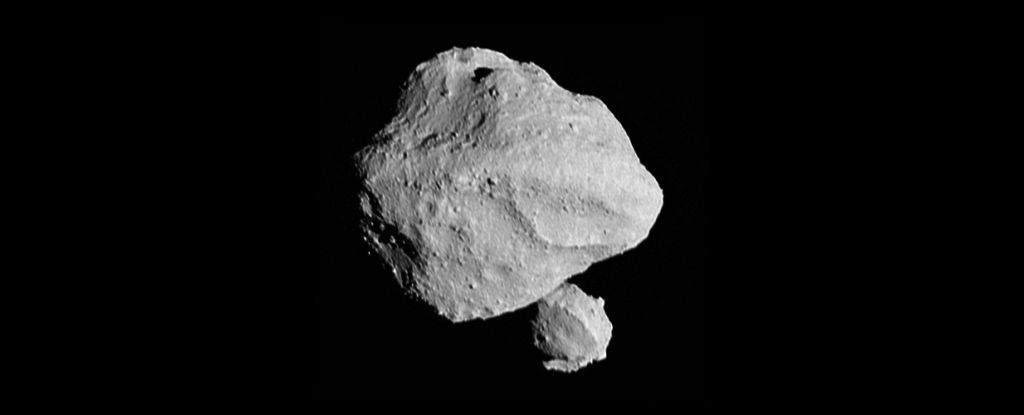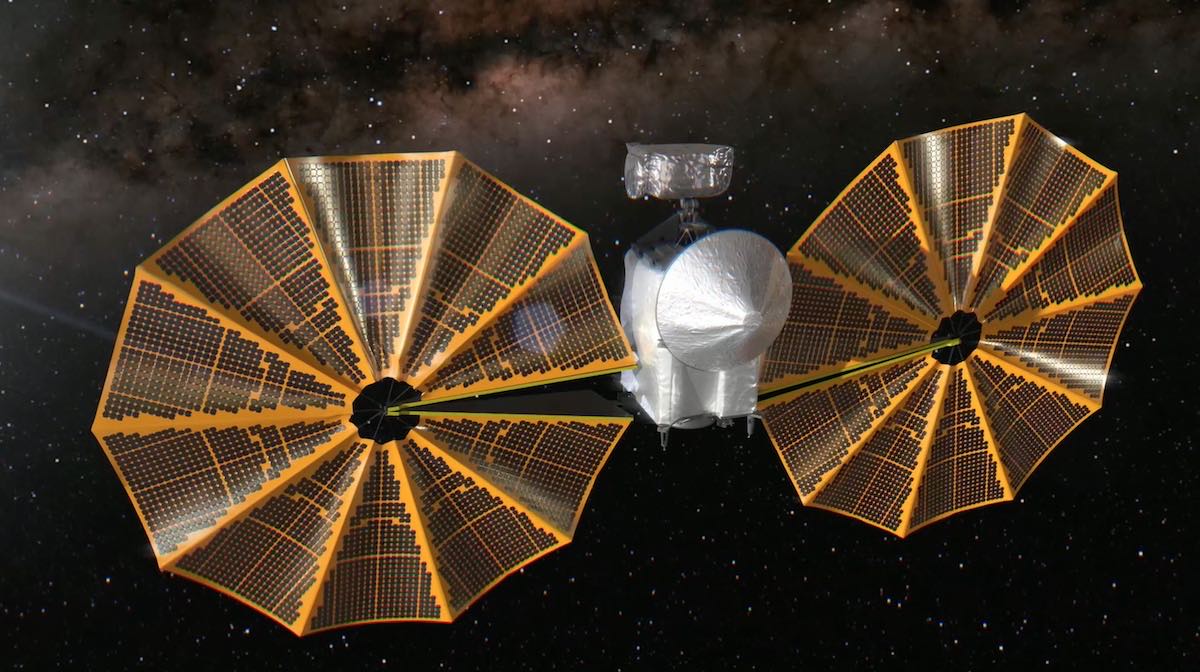NASA's Probe, Lucy, Reveals Hidden Surprise During Flyby Of Asteroid
NASA's probe, Lucy, reveals hidden surprise during flyby of asteroid. Asteroid Dinkinesh, located within the main asteroid belt between Mars and Jupiter, was discovered to have a small moon of its own.
Author:Daniel JamesReviewer:Anderson PattersonNov 07, 202313.5K Shares356K Views

NASA's probe, Lucy, reveals hidden surprise during flyby of asteroid. Asteroid Dinkinesh, located within the main asteroid belt between Mars and Jupiter, was discovered to have a small moon of its own. This diminutive asteroid moon is in an incredibly close orbit, making it indistinguishable from a significant distance.
This discovery implies that there may be a multitude of binary asteroids in the cosmos, far more than we currently recognize. The fact that there are so many binary systems could help us learn more about how celestial bodies in the Solar System form and interact with each other.
"We have seen many asteroids up close, and one may think little is left to discover and surprise us," says planetary scientist Simone Marchiof the Southwest Research Institute (SwRI).
"Well, that is clearly wrong. Dinkinesh, and its enigmatic moonlet, differ in some interesting ways from the similarly sized near-Earth asteroids that have been seen by spacecraft like OSIRIS-REx and DART."
Within the Solar System, we are aware of a variety of binary, trinary, and even a solitary quaternary asteroid. However, the precise extent of these clustered celestial bodies remains uncertain. There have even been instances where objects appear to have formed from the fusion of space rocks.
Asteroids do exhibit a propensity to congregate, such as in the main asteroid belt and the swarms of Trojan asteroids sharing Jupiter's orbit. Nevertheless, the frequency at which they closely approach one another, resulting in gravitational binding, remains unclear.
Scientists began to suspect the presence of a moon around Dinkinesh as Lucy approached the asteroid. This idea came from the object's changing brightness, which is a common sign that a second object is entering and leaving the field of view because of the binary's orbital motions, changing the total amount of light reflected from the asteroid.
Upon reaching proximity, Lucy confirmed these suspicions as it whizzed by at a speed of 16,100 kilometers (10,000 miles) per hour. The spacecraft clearly observed two objects engaged in a closely choreographed orbital dance. Preliminary measurements suggest that the larger rock is approximately 790 meters (2,600 feet) at its widest point, while the smaller one measures a relatively modest 220 meters (720 feet) in size.
"We knew this was going to be the smallest main belt asteroid ever seen up close," says planetary astronomer Keith Nollof NASA's Goddard Space Flight Center.
"The fact that it is two makes it even more exciting. In some ways, these asteroids look similar to the near-Earth asteroid binary Didymos and Dimorphos that DART saw, but there are some really interesting differences that we will be investigating."
Asteroids, particularly those situated in the orbit of Jupiter, are believed to consist of materials that were present during the early stages of the Solar System, preserving them in a relatively pristine condition.
Lucy's primary mission objective is to investigate these asteroids, providing insights into the formation of the Solar System and the origins of the planets. Over the course of its 12-year mission, Lucy will closely examine two asteroids located in the main asteroid belt and nine Trojan asteroids.
Some planets, especially the rocky inner planets, are thought to have formed by smaller rocks coming together and fusing together. Finding more binary asteroid systems like Dinkinesh could help us learn a lot more about this basic process of how planets form.
The process of extracting the remaining data from Lucy regarding Dinkinesh will require additional time, providing valuable information not only about the asteroid itself but also about the spacecraft's operational performance.
Conclusion
In the meantime, Lucy is en route to its next encounter in the main asteroid belt, the asteroid Donaldjohanson, with a scheduled rendezvous set for 2025.
Jump to

Daniel James
Author
Daniel James is a distinguished gerontologist, author, and professional coach known for his expertise in health and aging.
With degrees from Georgia Tech and UCLA, including a diploma in gerontology from the University of Boston, Daniel brings over 15 years of experience to his work.
His credentials also include a Professional Coaching Certification, enhancing his credibility in personal development and well-being.
In his free time, Daniel is an avid runner and tennis player, passionate about fitness, wellness, and staying active.
His commitment to improving lives through health education and coaching reflects his passion and dedication in both professional and personal endeavors.

Anderson Patterson
Reviewer
Anderson Patterson, a tech enthusiast with a degree in Computer Science from Stanford University, has over 5 years of experience in this industry.
Anderson's articles are known for their informative style, providing insights into the latest tech trends, scientific discoveries, and entertainment news.
Anderson Patterson's hobbies include exploring Crypto, photography, hiking, and reading.
Anderson Patterson's hobbies include exploring Crypto, photography, hiking, and reading.
In the Crypto niche, Anderson actively researches and analyzes cryptocurrency trends, writes informative articles about blockchain technology, and engages with different communities to stay updated on the latest developments and opportunities.
Latest Articles
Popular Articles
